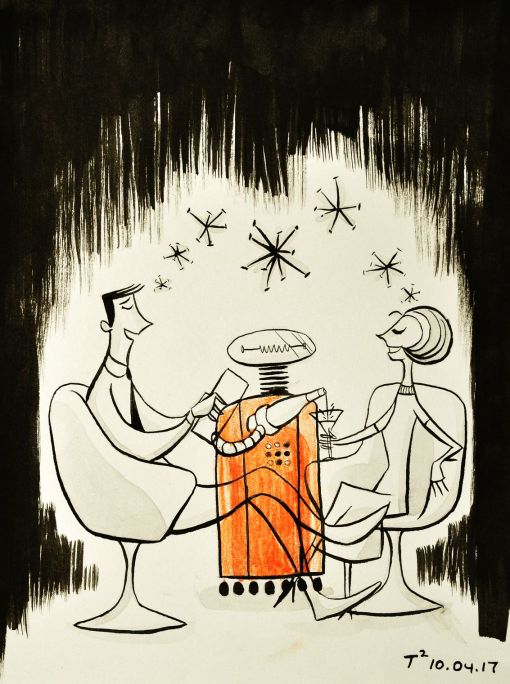By Janine Loechel
For all those with a passion for art, drawing doodling or the like, a career in cartooning may be picture perfect. Cartooning and animation allow not only for creation in the workplace (which may comfortably be your own house), but your own hours and pay rates as well. While drawing careers are rare, they are not impossible and neither is channeling your art into a free-range paycheck. Professional cartoonist, Chiyu Tom Tian, whose signature is T2 (for Tom Tian), discusses the perks and drawbacks to turning a passionate hobby into a paying profession.
Throughout the last eight years, Tian has had about 100 of his cartoons published. His cartoons have been featured starting in his high school newspaper, The Stinger, in the University of Chicago’s Maroon and other departmental publications at U of C, and for various freelance projects. Tian’s creations were even featured and televised on Al Jazeera International.
“I’ve been drawing ever since I figured out how to move my opposable digits,” said Tian. While he didn’t take any formal art classes until attending college at the University of Chicago, Tian has done a lot of independent study. “Mostly, I study and practice on my own. The latter part is especially important,” said Tian.
Tian’s drawings mostly depict political cartoons, but he also draws editorial illustrations to accompany articles in the Maroon. He draws holiday cards, to which he added, “general graphic illustrations, information graphics, and event posters.”
While the ability to draw is a definite requirement to becoming a cartoonist, Tian recommends that aspiring cartoonists must also be analytical about their surroundings and have “an understanding of what you want to draw rooted in careful observation and analysis. If you want to draw people or a specific species of humanity, then examine how they behave; the same applies to pretty much everything else…” The understanding of body language and emotions will beneficially transfer into the quality of your drawings.
To help get a concrete understanding of body or animal movement and natural (or contrived) interactions, Tian also suggests photography. “Getting a camera and taking up photography will do wonders for your illustrations and design work,” he said.
Other than individual design, illustrations are subject to deadlines. Additionally, political and current event cartoons are time-sensitive; the drawing must still be relevant news by time of publication. In most cases, interaction with the client is necessary to get client feedback and eventually come to an agreement.
Jobs that offer contracts to cartoonists through newspapers, magazines, or journals with sufficient salaries are rare, but it is not impossible to find freelance jobs. One of the benefits to creating drawings is the ability to sometimes create your own rates. For example, according to Tian, one illustration project that spans for two weeks may bring in $250. However, the same benefit may also be a drawback:

Illustration using India ink, watercolor lampblack wash, and color pencil on bristol board. Drawing courtesy of Tian.
“Generally, the independent artist/freelancer is at a disadvantage when it comes to pricing because (1) he’s not at liberty to bargain collectively (another reason to join an agency or studio), (2) someone else is always more desperate, and (3) lots of clients just don’t seem to believe that artists should be adequately paid for their work,” said Tian. Most of the jobs will come from freelance projects, unless you become a contracted cartoonist.
To further his career, Tian is currently developing a daily comic strip that he calls, “High-Functioning Failures.” The comic will feature recent college graduates who can’t find jobs, despite holding degrees, in a poor economy. He plans to pitch the idea soon and is applying for copyright protection.
To promote your own drawings, Tian recommends three strategies: publishing your work, networking, and establishing a website.
“Getting published online or in print is still the most expedient way of getting noticed, so include your contact info along with the things you draw. Otherwise, acquiring personal connections also helps… but having a portfolio site or blog couldn’t hurt.”
Honing your artistic abilities into a paycheck isn’t easy, but it is possible. Make your future less sketchy: continue to draw, refine your techniques, and distribute your images.
Check out more illustrations by T2 below:
http://editorialcartoonists.com/cartoonist/profile.cfm/TianC/



Leave a comment